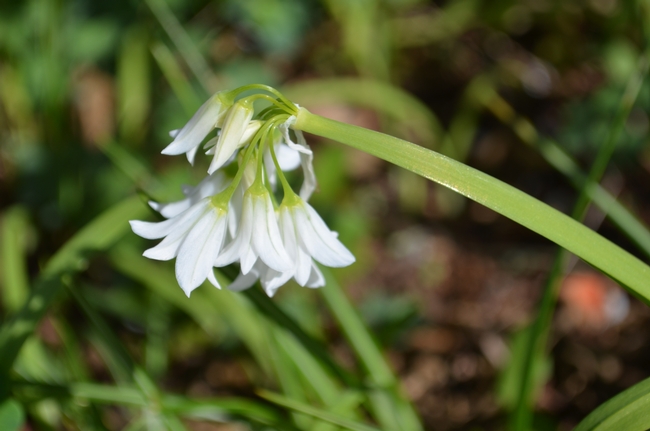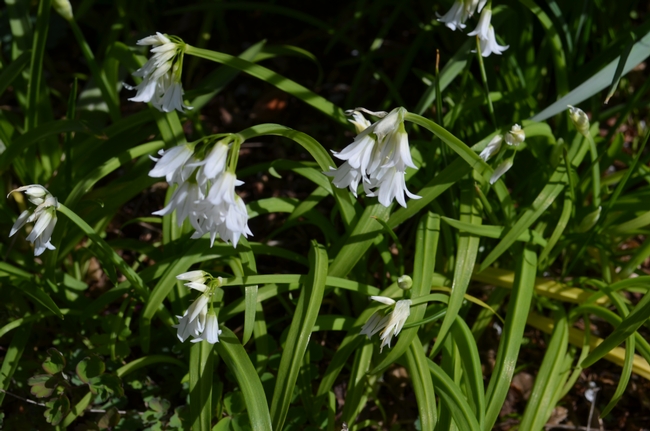This (Wild) Onion Makes Me Cry!
When it recently rained for days in a row, I stood at the window and watched my weeds grow. I have quite the variety of weeds, as I suspect we all do, but some I don’t really mind. For example, Oxalis is extremely invasive, but it is somewhat pretty and is almost enjoyably easy to pull up from the soil. Even if I don’t always get all of the bulbs like I should, at least I can hold some hope that I’m weakening the bulbs by pulling up the rest of the plant. Plus, Oxalis goes dormant with the summer heat. Out of sight, out of mind, right?
But my least favorite? The wild onion, Allium triquetrum, which is also known as the three-cornered leek. It’s not an ugly weed—in fact, it is sometimes cultivated as an ornamental. It has flower stems of about 1 foot tall, with nodding clusters of small, bell-shaped, white flowers. Not surprisingly, it has a strong onion smell.
The wild onion multiplies quickly, spreading by bulbs and seeds, and it is very hard to remove once established. Like Oxalis, it can be controlled by digging up the entire plant, including the bulbs. But unlike Oxalis, which pulls up easily (thus giving me a false, yet satisfying, sense of accomplishment), wild onion snaps at the soil level every time I try to pull it up. So the entire plant must be dug up, which is difficult to do given the extent of its spread throughout the yard, its proximity to other more desirable plants, and the depth to which I must to dig. And I think that’s what I find so aggravating about the wild onion. I could quit work and dig wild onions for the rest of my days, but I’m still fairly sure that I will not prevail. It spreads so quickly and so thoroughly! So at best, I try to content myself with digging a few plants and snapping off the flower stalks so that the plants don’t spread even more via seed. I know there are worse weeds, but this wild onion is the one onion that makes me want to cry.

Close up of wild onion flowers. (photos by Erin Mahaney)

Note the cluster of white onion plants.
Comments:
Snip the flowers and buds once they appear,
that at least limits proliferation.
Then you can take 1 square metre at a time and systematically dig up bulbs.
Repeat as they appear up.
I would not worry about stalks unless they contain buds.
Parts can be isolated in a container and let deteriorate into compost or use as a fertilizer tea.
Gradually claim back space, but keep vigilant.
If they grow on the edge of paths, be careful you do not walk on buds or flowers. You just get the process off again.
Cheers. Little by little, but be vigilant as per vacated space.
They can be used for soup, salad, or juicing. Not too much.
Wild Onion.
Jack


thank you!
Posted by Kate Douglas on April 6, 2014 at 7:09 PM